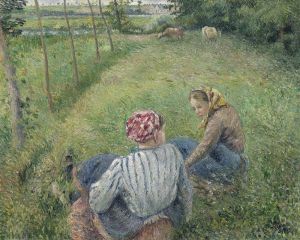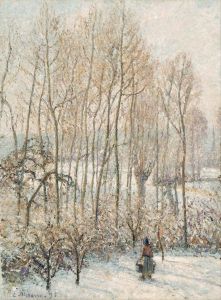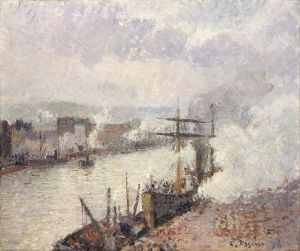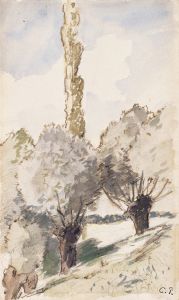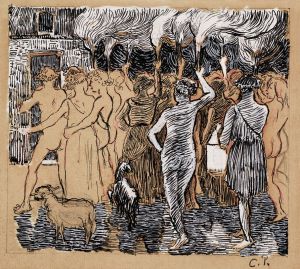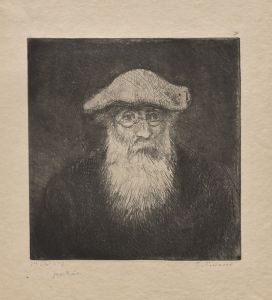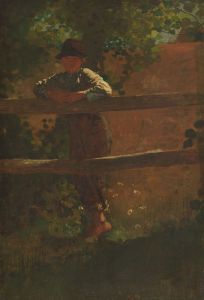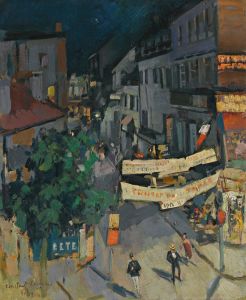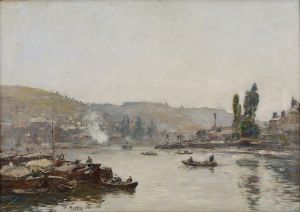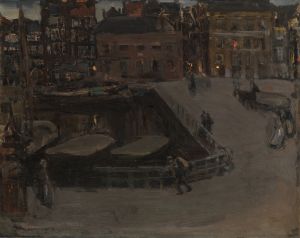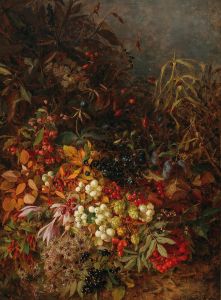
Pontoise
A hand-painted replica of Camille Pissarro’s masterpiece Pontoise, meticulously crafted by professional artists to capture the true essence of the original. Each piece is created with museum-quality canvas and rare mineral pigments, carefully painted by experienced artists with delicate brushstrokes and rich, layered colors to perfectly recreate the texture of the original artwork. Unlike machine-printed reproductions, this hand-painted version brings the painting to life, infused with the artist’s emotions and skill in every stroke. Whether for personal collection or home decoration, it instantly elevates the artistic atmosphere of any space.
Camille Pissarro, a prominent figure in the Impressionist movement, painted "Pontoise" during a period when he was deeply engaged with the landscapes of rural France. Pissarro, born in 1830 in the Danish West Indies, moved to France in his youth and became a central figure in the development of Impressionism. His work is characterized by its focus on rural and urban scenes, capturing the changing qualities of light and atmosphere.
"Pontoise" is one of many works Pissarro created while living in the town of Pontoise, located northwest of Paris. He moved there in the early 1870s, seeking a peaceful environment that offered a variety of landscapes to explore artistically. The town and its surroundings provided Pissarro with a rich tapestry of rural life, which he depicted with a keen eye for detail and a profound understanding of the natural world.
The painting "Pontoise" exemplifies Pissarro's dedication to capturing the essence of the French countryside. His technique involved the use of loose brushstrokes and a vibrant palette, which were hallmarks of the Impressionist style. This approach allowed him to convey the transient effects of light and weather, a central theme in his work. Pissarro's paintings from this period often depict scenes of everyday life, including fields, roads, and the people who inhabited these spaces.
In "Pontoise," Pissarro's composition is likely to reflect his interest in the interplay between human activity and the natural environment. His works from this time frequently include figures engaged in agricultural labor or leisurely activities, set against a backdrop of fields, trees, and sky. This integration of human and natural elements underscores Pissarro's belief in the harmony between people and their surroundings.
Pissarro's time in Pontoise was also marked by his interactions with other artists. He was a mentor to several younger painters, including Paul Cézanne, who visited him in Pontoise. Their exchanges were mutually influential, with Pissarro's emphasis on structure and Cézanne's focus on form and color leaving lasting impacts on each other's work.
The painting "Pontoise" is a testament to Pissarro's ability to capture the subtleties of rural life and the natural landscape. His work from this period is celebrated for its authenticity and its contribution to the broader Impressionist movement. Pissarro's paintings are housed in major museums around the world, and his legacy as a pioneering Impressionist continues to be recognized and appreciated by art historians and enthusiasts alike.
Through "Pontoise," Pissarro not only documented the beauty of the French countryside but also contributed to a revolutionary approach to painting that emphasized perception and experience over realism. His work remains a vital part of the Impressionist canon, illustrating the movement's core principles and its enduring influence on the art world.







